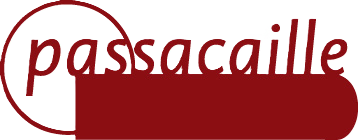Vocem cum cithara dedit
Singing Horace in the early middle age
Stefano
Albarello: chant, cithara and lyra
|
The presence of a large number of Horatian carmina accompanied by musical notation, although apparently unusual, turns out to be an aspect not exceptional for the poetic-musical culture of the early Middle Ages. From the Carolingian era onward, the odes of Horace and the late antique poets had become a fundamental element in Latin studies; although pagan, their grammatical purity and the compositional charm of classical meters were recognized. The spread of the study of classical metrics within cathedral and monastery schools, combined with a continuity of poetic writing in the liturgy with hymns, favored the study of classical meters to the point of even generating sung forms. Thus, within the manuscript collections of Horace's poetics, signs of musical notation appear to accompany a certain number of these carmina. This interpretation of Horace's carmina is based on transcription in quantitative meter, that is in the accentual rhythms typical of classical meters; this allows for a very different interpretative approach than that proposed by musicology for much of the twentieth century. The fourteen carmina we present, which are the few for which we can be reasonably certain regarding the determination of the melody, offer us an unusual repertoire (at least by our modern perception of medieval chant). Their rhythm, dictated precisely by the metrical quantity of the verse, reveals a particular flow of the chant, with apparently irregular rhythms when compared to the transformation, both poetic and musical, that would take place from the thirteenth century onwards. This collection of songs is defined by a common denominator dear to the intellectuals of the time: they are rhythmic songs adapted, or perhaps specifically created, in the compositional style of hymnody. As is well known, we know only a small part of the hymn repertoire in terms of its melodies, and some of these applied to carmina could likely be part of it. If we consider this particular repertoire of songs to be the convivial expression of a cultured environment, certainly linked to schools of prosody, we can imagine that sacred singers performed while accompanying themselves with the lyre or similar instruments still in use. It is worth recalling that the practice of playing the lyre (or earp) to accompany oneself in singing is well known, especially in Benedictine circles in Britain and Ireland. This suggests that the presence of a repertoire of songs linked to the Late Antiquity period, in a context where they were an aid to the practice of metrics, could also have circulated and been performed for convivial occasions.
Stefano Albarello©2025
|

PASS 1173